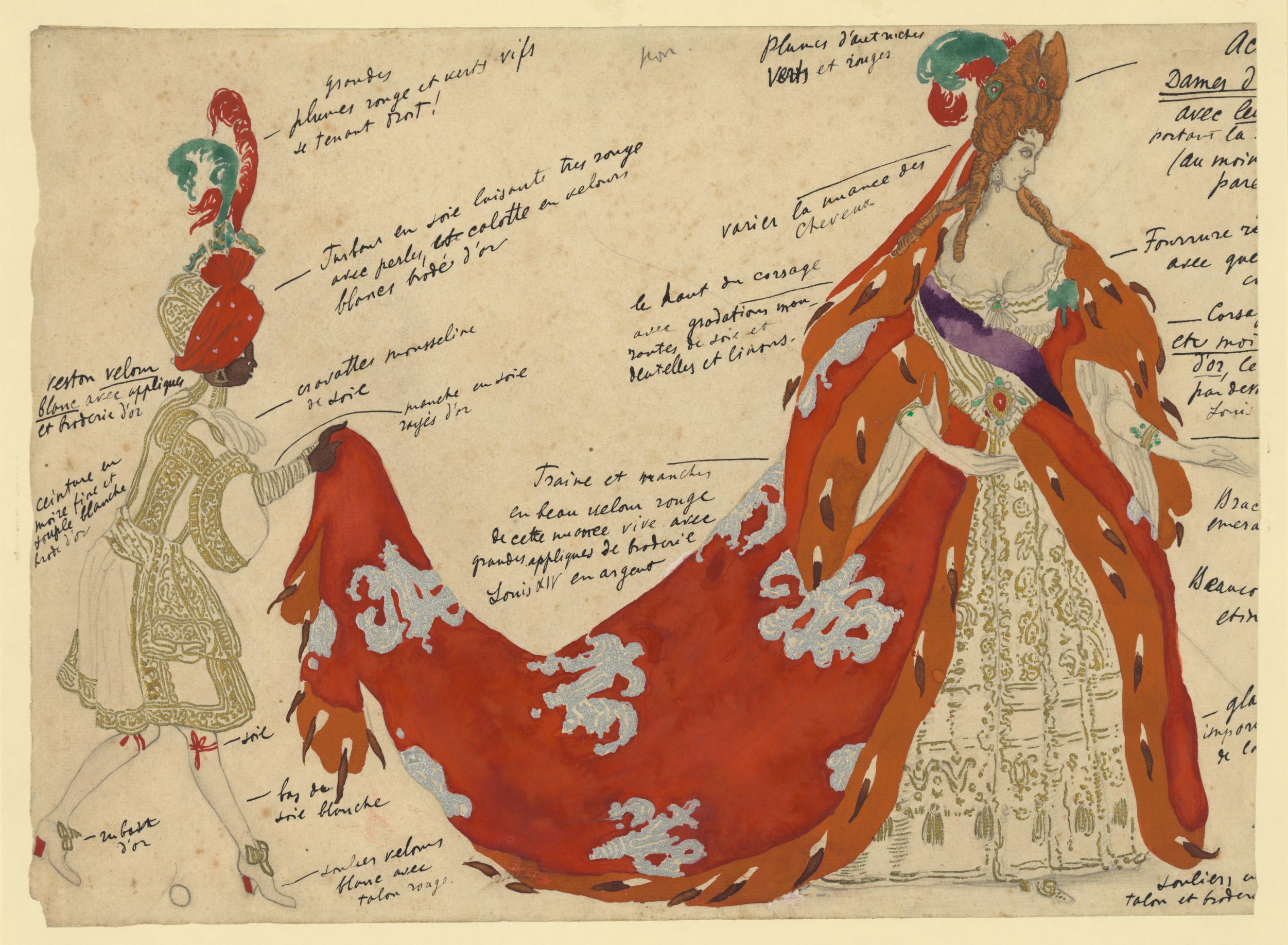people » Léon Bakst
Léon Bakst (1866–1924). Russian artist, illustrator and stage designer
Léon Bakst was a Russian painter and stage designer who, in 1898, became associated with Serge Diaghilev and the artists behind the Mir Iskusstva (World of Art) group, who were inspired by the Art Nouveau movement sweeping across Europe. This eventually led to Bakst’s work in stage design and, ultimately, to the explosion of colour in his sets and costumes for which he became renowned. Bakst contributed dramatically to the triumphant ballet seasons organised by Diaghilev for the Ballets Russes in Paris from 1909 onwards. His designs were often characterised by a sumptuous, vividly exotic orientalism. For Diaghilev, his productions included Cléopâtre, Schéhérazade, Le Spectre de la Rose, L’Après–midi d’un Faune, Jeux, Les Femmes de bonne humeur and Diaghilev’s ill-fated London staging of The Sleeping Princess in 1921. Diaghilev later moved into more modernist, less exotic styles for his ballet, using artists such as Pablo Picasso, Henri Matisse and Marie Laurencin. After parting with Diaghilev, Bakst worked independently for other dancers and choreographers, including for Ida Rubinstein and Anna Pavlova. He died in Paris in 1924 having left Russia for the last time in 1909. In just a few years, Bakst had utterly transformed set and costume design for ballet.

